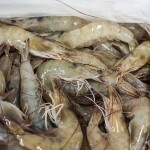With European consumers increasingly challenged by inflation and suffering from reduced purchasing power, just two-thirds of Norway’s farmed salmon exports went to the region in January 2023 – the lowest trade ratio it has posted in any month since 1989.
Consequently, Europe has lost its spot as the Scandinavian country’s top seafood export market, replaced by the United States, which posted a 59 percent upturn in its salmon purchasing from Norway in the month. According to the latest figures from the Norwegian Seafood Council (NSC), the U.S. market imported NOK 1.15 billion (USD 111.2 million, EUR 103.6 million) worth of Norwegian seafood in January, an increase of 41 percent year-on-year.
In value terms, it was also the market with the largest growth, buying NOK 338 million (USD 32.7 million, EUR 30.4 million) more seafood in January 2023 year-over-year, despite importing 4 percent – the equivalent of 9,655 metric tons (MT) – less seafood by volume. While the value of Norway’s other seafood species sold to the U.S. market, such as cod and haddock, has decreased, Norway’s U.S. salmon exports increased sharply, with salmon accounting for NOK 344 million (USD 33.2 million, EUR 31 million) in sales, making the U.S. Norway's largest salmon market.
NSC Communications Director Martin Skaug said, generally speaking, salmon prices in overseas markets are higher than for Europe.
“Fresh, whole salmon to the U.S. is largely a niche market for the larger fish, which ends up in the restaurant segment, while exports to Europe are dominated by the retail market. This explains much of the price difference,” Skaug told SeafoodSource.
In addition, the U.S. dollar has strengthened against the euro, Skaug said.
“The price is above all a result of supply and demand. Reduced volume, both from Norway and other salmon-producing nations, largely explains the price development,” he said. “For the U.S. market, we have seen a reduced supply from Chile and Canada, among other things.”
As for whether there any signs that prices could go too high for the U.S. market and subsequently harm consumer interest, Skaug said ...
Photo courtesy of TemporalStreet/Shutterstock








